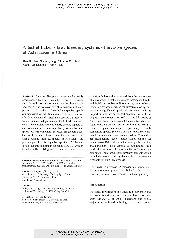摘要
Invasive alien plant species are frequently characterized by a high fecundity. However, because suitable pollinators and/or mates may be absent in the new range, it is not clear how they achieve high seed production. According to Baker's Law, species capable of uniparental reproduction are more likely to establish after long-distance dispersal than species that rely on suitable mates and pollinators. To test whether self-compatible species, and particularly species capable of autonomous seed set, are more likely to establish and spread, we experimentally assessed the breeding systems of 12 species of Asteraceae that are invasive in China. Among these 12 species of Asteraceae, the percentages of self-compatible species (66.7%) and species capable of autonomous seed set (83.3%), which included self-fertilizing and apomictic species, were significantly larger than expected from the percentages of such species in global data sets of Asteraceae (36.8% and 46.0%, respectively). Furthermore, the number of Chinese provinces in which the invasive alien species occur was significantly positively correlated with the proportion seed set on bagged capitula (i.e. with the degree of autonomous seed set). Among 36 species of Asteraceae that are invasive in China and for which we found breeding-system data in the literature, we also found a higher than expected percentage of self-compatible species (65.7%), and that these self-compatible species are more widespread in China than self-incompatible species. These results support the predictions of Baker's Law that self-compatible species, and particularly those capable of autonomous seed production, are more likely to establish and spread in a new range. Therefore, breeding systems of plants should be included as one of the key elements in risk assessment protocols for plant invasiveness.
